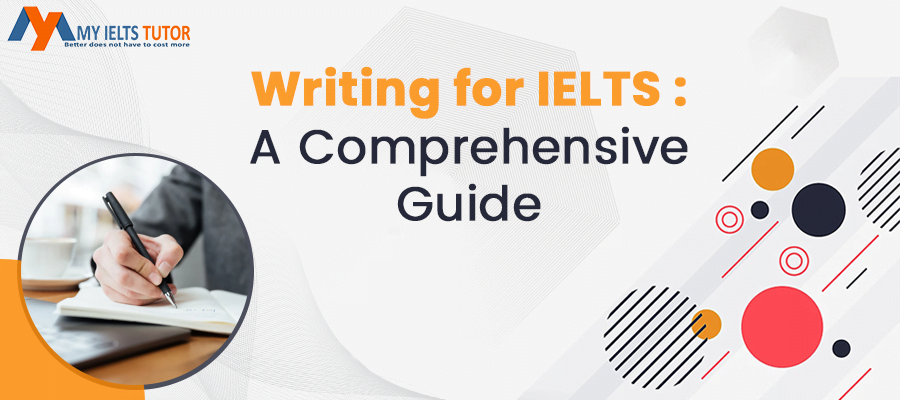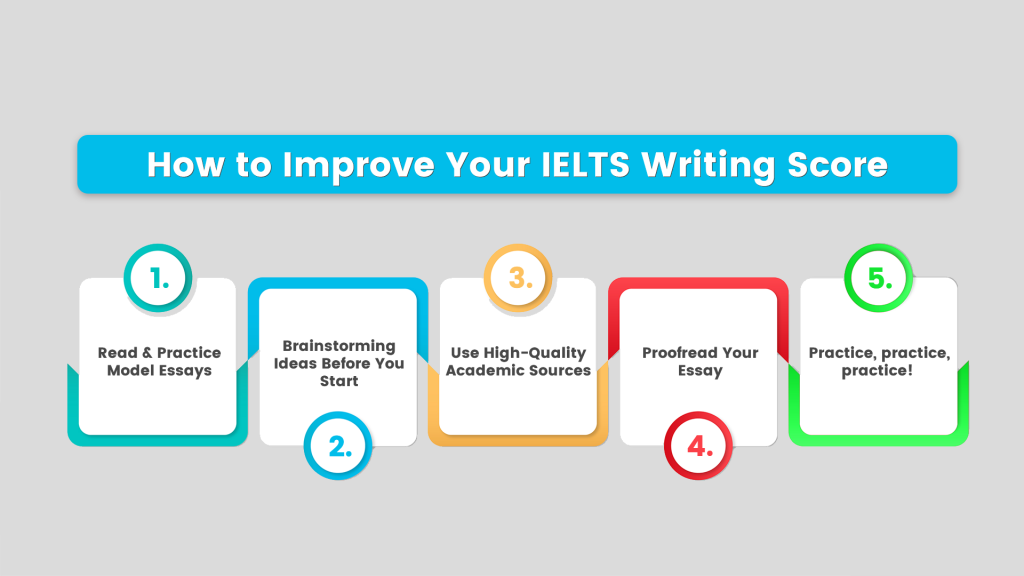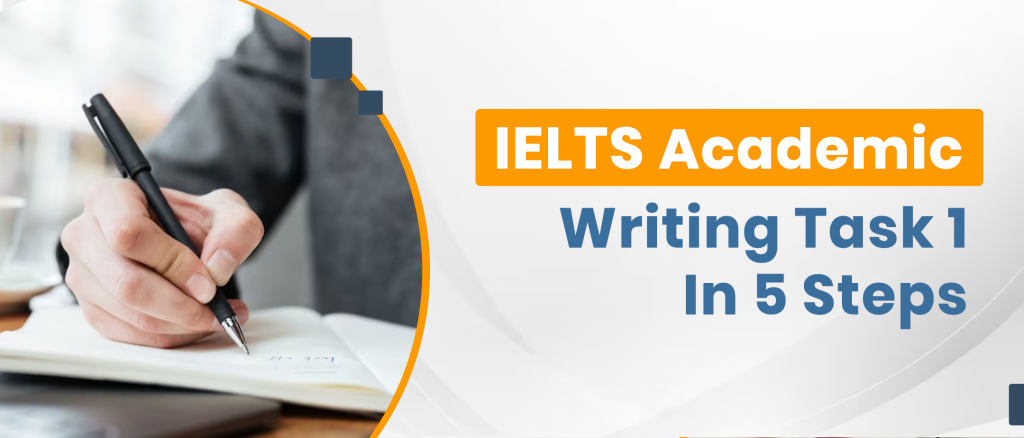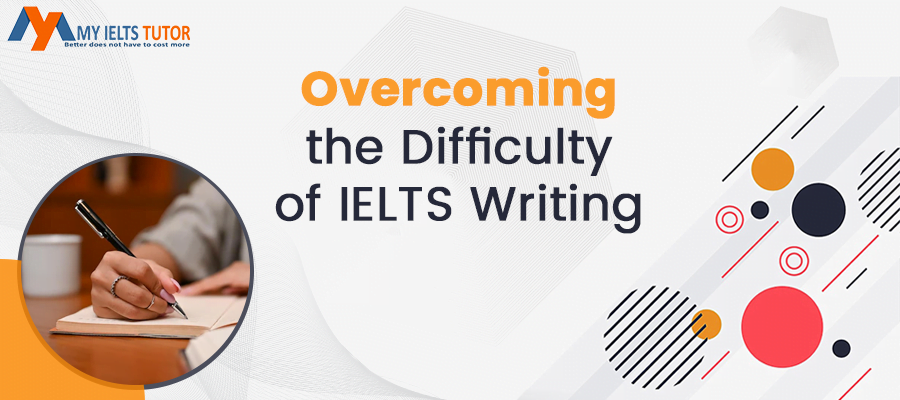Writing for IELTS: A Comprehensive Guide

In this comprehensive guide, we’ll go over all aspects of the IELTS writing test. We’ll discuss the different types of essays you’ll be asked to write, and provide step-by-step instructions for how to write each one. Plus, we’ll give you tips and advice for staying motivated and overcoming writers’ block.
So whether you’re a beginner or an experienced IELTS writer, this guide has something for you. Let’s get started!
What Is the IELTS Writing Test?
The IELTS Writing Test is a test of your ability to write in English. You will be asked to write two essays: one Task 1 and one Task 2.
Task 1 is a letter For general training students and report for academic students . Task 2 is an essay on a more challenging topic.
The test is designed to assess your ability to communicate information, ideas, and arguments in writing. It is also designed to assess your ability to respond to questions and criticism about your writing.
Why Is Writing Important for IELTS?
When you’re taking the IELTS test, writing is one of the sections that counts for your final score. That’s why it’s so important to make sure that you spend enough time practicing and preparing for this section.
The good news is that there are a lot of resources out there to help you improve your writing skills. In fact, we have an entire section on our website dedicated to helping IELTS students improve their essay writing.
So why is writing so important for IELTS? Well, it’s not just about getting a good score on the test. Writing is a critical skill that you’ll need in academic and professional settings. That’s why it’s important to practice and develop your skills so that you can perform your best on test day.
How to Prepare for the IELTS Writing Test

In order to ace the IELTS writing test, you need to practice, practice, practice. And that means working on your writing skills on a regular basis.
But it’s not just about practicing the actual writing task. You also need to be familiar with the types of questions that will be asked. So make sure you spend some time reading the IELTS test instructions carefully.
Equally important is knowing what the marking criteria are. So take a look at the marking grid and make sure you understand how your writing will be graded.
By following these tips, you’ll be well on your way to scoring high on the IELTS writing test!
What Are the Different Types of IELTS Writing Tasks?
In the IELTS writing test, there are two tasks: a task 1 and a task 2.
Task 1 is a report for academic training students , and it usually asks for information about a graph or table. In this task, you need to give a concise summary of the data, as well as describe any trends that you notice.
Task 1 for general training is letter writing and it usually asks to write a situation based letter may be to a friend, manager or boss. The relation with the person to whom you are writing the letter will decide the tone whether it will be a formal or an informal letter
Task 2 is an essay, and it asks for your opinion on a given topic. In this task, you need to develop your argument and provide evidence to support your point of view.
How to Plan and Structure Your IELTS Writing Task
Ok, so you’ve got your task, and now it’s time to plan and structure your essay. Here are a few tips to help you out:
- Plan your essay before you start writing. This means thinking about the main points you want to make and organizing them in a logical order.
- Start with a strong introduction that clearly states your position on the topic.
- Develop your argument using clear and concise points, making sure to support your points with evidence from the text.
- Use a variety of sentence structures to keep your writing interesting and engaging.
- Write a strong conclusion that sums up your argument and leaves the reader with something to think about.
How to Write an IELTS Essay
Now that we’ve covered the basics of IELTS writing, let’s take a look at how to actually write an essay. The best way to learn is by example, so let’s take a look at a sample question and see how we might go about answering it.
The question is: Some people think that the way to be successful is to make as much money as possible. Do you agree or disagree?
When you’re writing your essay, make sure to include your opinion on the matter. You don’t have to agree or disagree with the statement, but you should state your position either way. Here’s an example of how we might write this essay:
I think that the way to be successful is to find something that you’re passionate about and put your heart and soul into it. Money is important, but it shouldn’t be the only thing that drives you. There are many people who are successful without having a lot of money, and I think that’s because they’re doing something they love.
How to Write an IELTS Letter
When it comes to writing letters for IELTS, it’s important to remember that there’s a specific format you need to follow.
The general structure of a letter is usually:
- salutation – Dear sir/mam/john
- Opening paragraph
- Detailing paragraph(s)
- Closing sentence
- Signature
Within each of these sections, there are specific things you need to include. Let’s take a closer look. The opening paragraph should introduce the topic of your letter, and the main paragraph(s) should provide more detail. The closing sentence should thank the recipient for their time, and the signature should be your name followed by your signature.
IELTS Writing Task 1 – Academic
The 1st Task of the Academic Writing Module asks you to describe and summarise some information presented in a visual format (chart, table, graph or diagram) in about 20 minutes. Students, for this task, must write at least 150 words.
The Academic Writing Task 1 can be of the following types:
| Types of Diagram | What does it mean? |
| Line Graph | Shows Trend |
| Bar Chart | Shows Comparison |
| Pie Chart | Shows Contribution |
| Table | show any of the functions mentioned above |
| Process Diagram or Flow Chart | Shows Stepwise information |
| Picture or Map | Shows image |
IELTS Writing Task 1 Academic Answer Structure
For a high band score in Academic Writing Task 1, the students must structure their answers. First, we will look at a high band score answer structure for the first four categories mentioned above like Line Graph, Bar Chart, Pie Chart, & Table. Because the answer structure for a process or flow chart or a picture is different.
The students can structure their answers for the first four categories as below;
| Paragraph | Structure |
| Opening Paragraph | one paragraph consisting of 1 – 2 sentences explaining what you will describe. |
| An Overview | 1-2 Statements interpreting the key or significant features of the graph/map/process/picture |
| Body | The body structure may have a minimum of 2 paragraphs depending on the question asked, but they should not be more than 4. The students must answer the examiner’s demands in the body part. |
IELTS Writing Mistakes to Avoid
Are you preparing to take the IELTS Writing Exam? If so, you need to be aware of the most common mistakes people make.
One of the biggest mistakes is not paying attention to the task instructions. Make sure you read the question carefully and understand what’s being asked. Sometimes people try to be too clever and they end up writing something that’s completely irrelevant to the topic.
Another mistake is not organizing your thoughts properly. When you’re writing a paragraph, it’s important to have a clear idea of what you want to say and how you want to say it. Rambling on and on without any structure will only confuse the reader.
And finally, don’t forget to proofread your work! A lot of people make mistakes because they don’t bother to check their work for mistakes. This is a BIG mistake, because it can cost you marks in the final score.
Sample IELTS Writing Tasks
If you’re looking to improve your IELTS writing score, one of the best things you can do is practice. And what better way to practice than by working on sample tasks?
In this section, we’ve provided a range of sample tasks to help you get started. These tasks cover a variety of different topics, so you can get a feel for the different types of questions that come up in the test.
We’ve also included some tips and advice to help you start tackling these tasks. So don’t waste any time—get started today and see how much your score improves!
Conclusion
Congratulations on deciding to take the IELTS writing test! This document is designed to provide you with all the information you need to get a great score.
Inside, you will find:
- An introduction to the IELTS writing test
- The format of the writing test
- Advice on how to approach the task types
- Detailed guidance on how to generate ideas and write essays for each task type
- Sample answers to each task type
- Useful language for academic writing
- A glossary of terms
- Tips for improving your writing skills
You will also find a number of exercises to help you practice and improve your score. The more you practice, the better your score will be. Good luck!
[carousel_slide id=’16536′]






